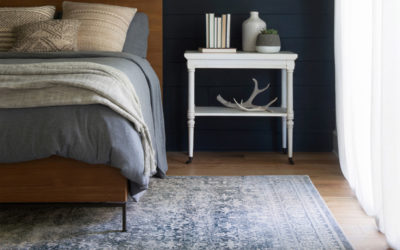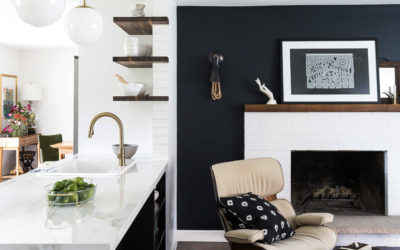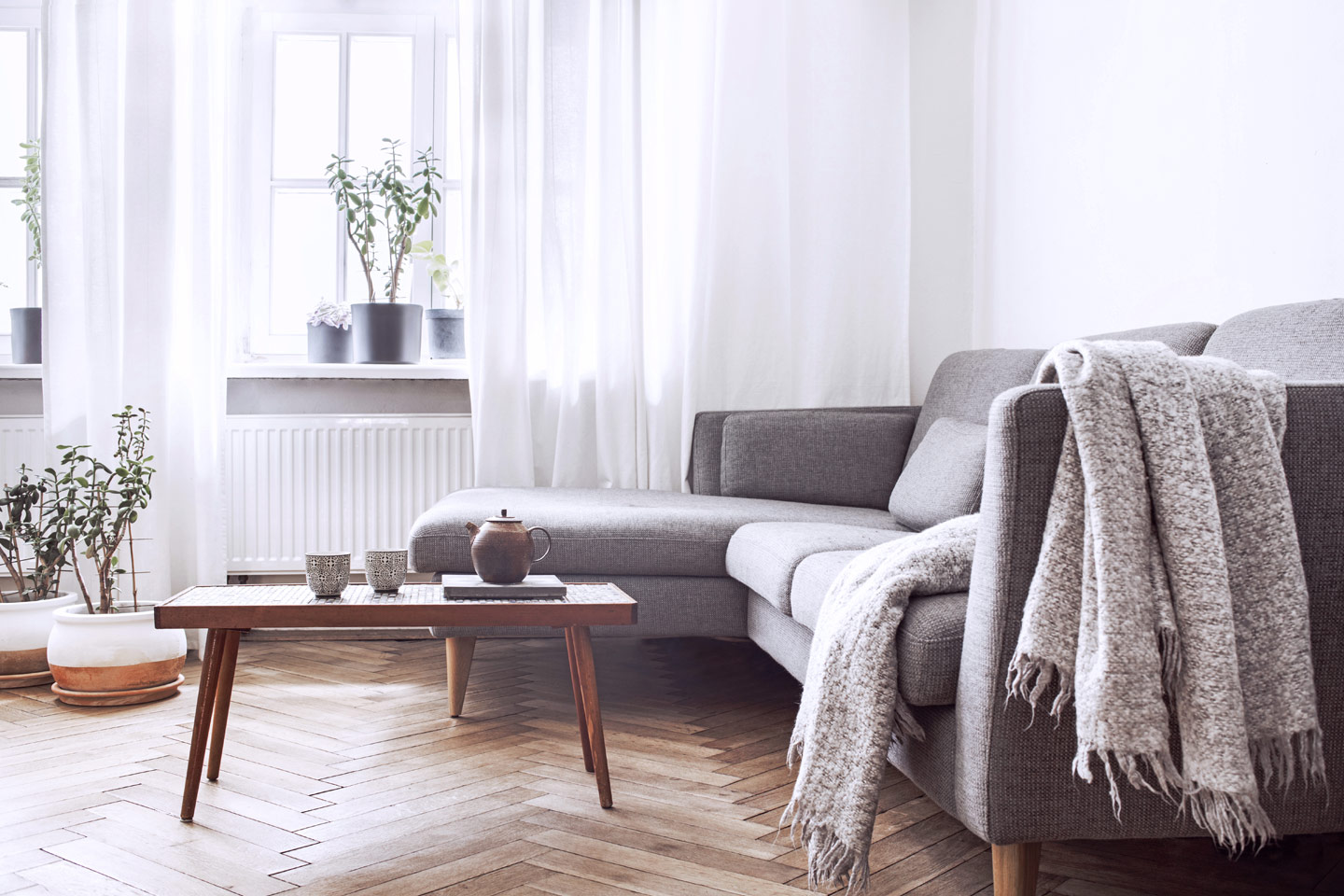
Five Tips for Designing Small Spaces
Don’t let IKEA have all the fun—you too can design a small space spectacularly! If you asked 10 interior designers how to design for small spaces you’d probably get a lot of different ideas because each space has its own story to tell. What works in one room may not work in another. However, every room has five core elements or layers:
- Paint Color
- Floor
- Furniture
- Walls and Windows
- Lighting
Here are tips to tackle these five elements in a small room.
1. Paint Color
The paint color on your walls is layer one in a room. It’s the backdrop to your story. In a small space, you want your backdrop to be neutral and light. Essentially you want the walls to disappear so you don’t feel boxed in. A flat white variety or light neutral grey works best to help reflect the light and bounce it around the room, giving the illusion of a larger, brighter space. Paint your trim elements the same tone but in a semi-gloss or eggshell finish. If you want a bit more contrast, go one shade darker than your wall color. For maximum uplifting, paint your ceiling flat white—no matter what paint color you choose for your walls.
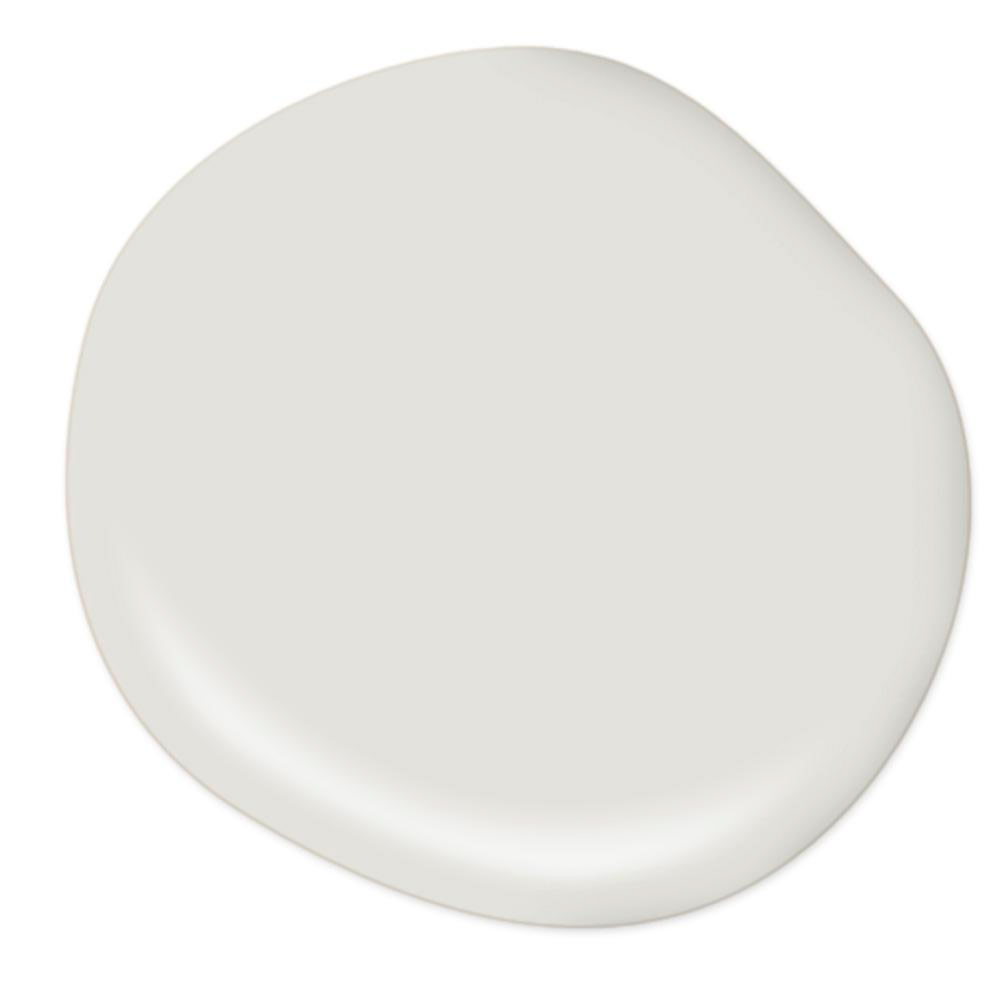
Behr Marquee #MQ3-23 Statuesque Matte: This paint color works well in small spaces. It has enough contrast with white trim and it bounces light for a brighter room.
2. Floor
Layer two is your floor—mainly your rug. A rug can make or break a small space if it’s not the right size. If the rug is too small the negative space around it will only emphasize the smaller size of the room. To make a smaller room feel larger, choose a rug that’s almost wall-to-wall, leaving about a two foot perimeter. That will create the illusion of extra floor space and also allow room for your furniture pieces to back up onto the wall better. As far as color, the same paint color philosophy applies here too—keep it neutral and on the lighter side. Keep the pattern to a minimum but don’t shy away from texture. If you have hardwood floors, leaving them bare also works.
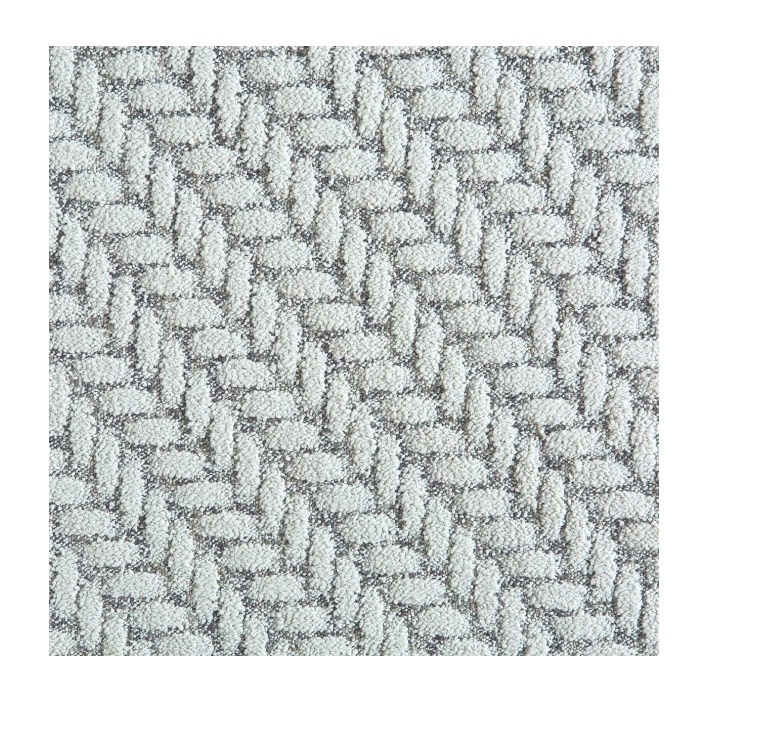
Flor Carpet Tiles, Roadside Attraction in Frost: This carpet tile has just enough color and texture to hold interest and won’t weigh the room down.
3. Furniture
While it may seem obvious, choose furniture with a smaller footprint when your space is limited. Many people do the opposite and choose larger furniture because they assume since the room is so small they need a larger sofa, chairs, or table to accommodate the most people possible. Now the room feels like packed sardines and nothing has space to breathe—including you and your guests. Room-appropriate sized furniture allows space for energy to flow, keeping the room from feeling stagnant—plus it visually feels lighter. When it comes to shelves or cabinets, choose furniture that has maximum storage for your type of belongings. Go vertical more than horizontal to make the eye go up. Don’t be afraid to add some color contrast with your furniture to make them pop against the neutral walls and floor. In all living spaces, we interact the most with furniture, it’s what we sit or lay on and feel with our hands. Choose pieces that speak to your style and comfort.
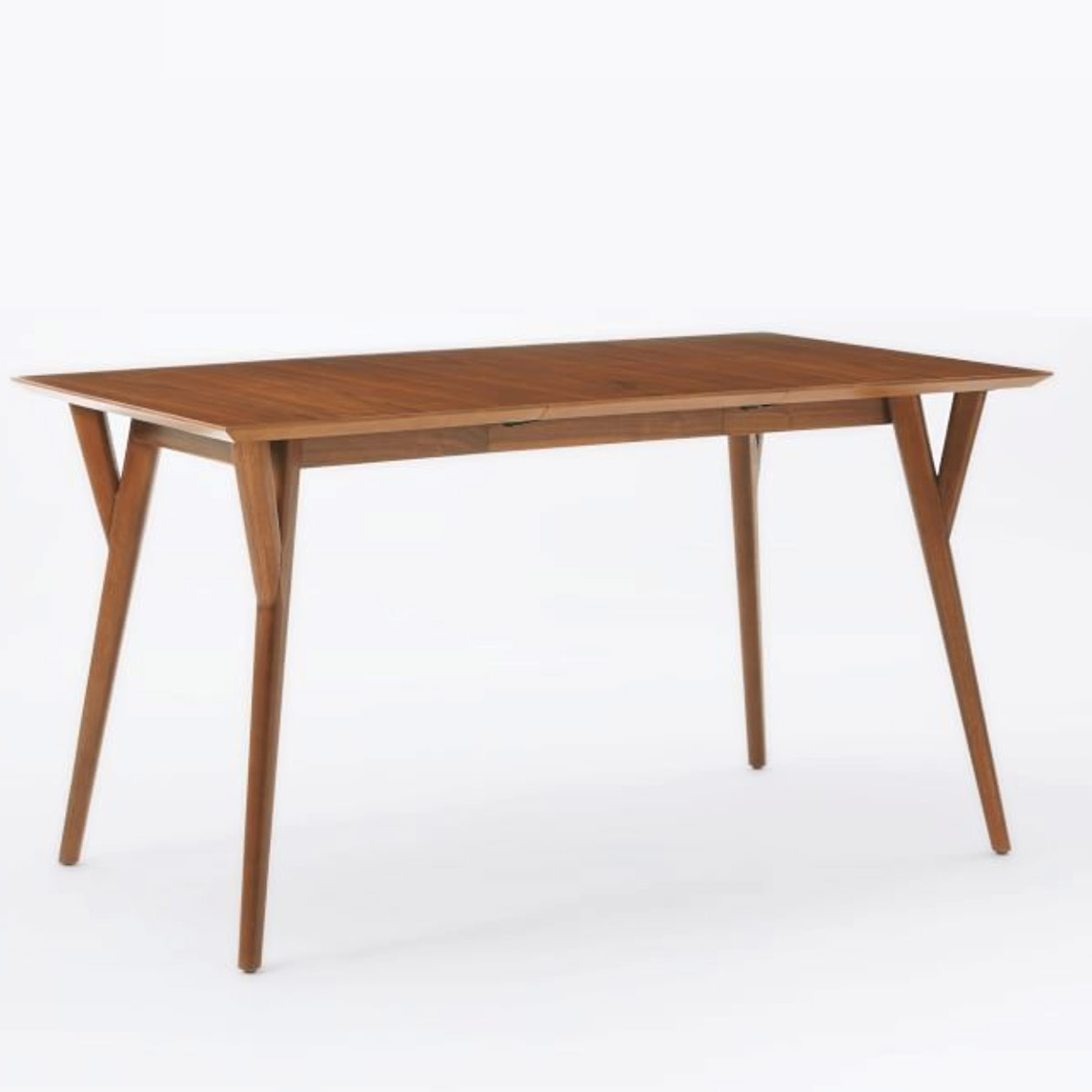
West Elm Mid-Century Expandable Dining Table: This table works well in a small dining room. The thinner legs feel light and airy and when needed, extend it with a leaf.
4. Walls and Windows
The fourth layer is the walls and windows, meaning what you hang on your walls and how you treat your windows. To maximize space mirrors work wonders. Hanging a mirror either directly across from a window or next to it will give the illusion of space and depth. If your room only has windows on one side, hang a wide, horizontal mirror on the opposite wall to reflect the light and give the illusion of more space. If you hang artwork, allow space in between for the eye to rest. A too tightly hung gallery will feel heavy and squished in an already small space. Same rule for hanging shelves—stock them lightly with only items you cherish and love. Just like your furniture, keep your walls light and airy.
Speaking of light and airy, the same applies to your window treatments. Don’t use heavy, dark fabrics or blinds that weigh the room down. Go for sheer or linen curtains ideally the same color of your wall or trim color and center mount them in between the top of the window molding and the ceiling. A thinner fabric will let more light in while softening the lines of the window. Roller shades are great for a modern, minimal look. Again, keep the same color as the walls or trim.
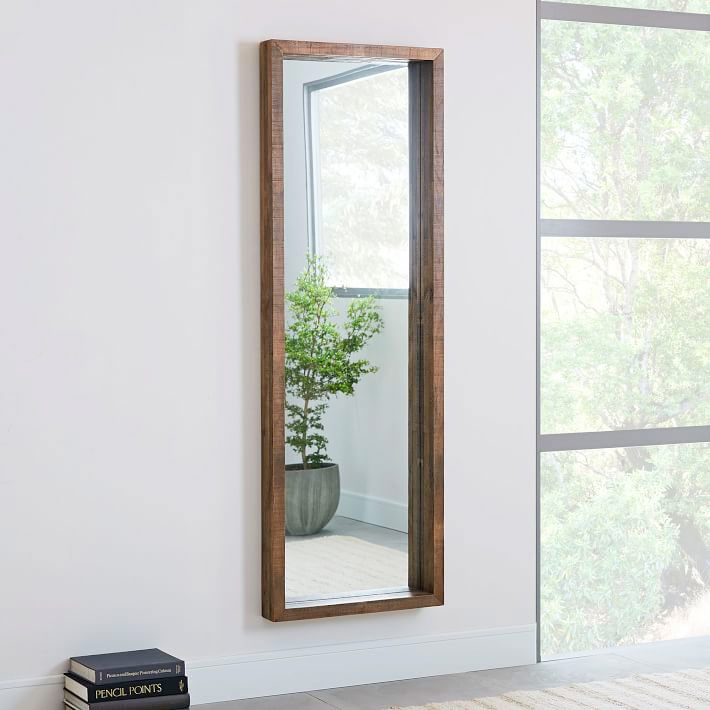
West Elm Emmerson® Modern Reclaimed Wood Floor Mirror: Hanging a large mirror horizontally directly across from a window(s) will bounce more light and create more depth.
Lighting
The last layer is lighting your space. For small spaces, more is better. Depending on the room type, track lighting or recessed lights work well to get light into every nook and cranny—like an in-home office, playroom, or kitchen. Dining rooms are mostly lit by a chandelier, so choose a mid-to-large fixture that’s simple and put it on a dimmer. That way you can dim the lighting when hosting a dinner party or turn it up bright for crafting or homework. Have a dark corner? Add a small table lamp or install wall sconces to extend the eye and make the room feel larger. In living rooms, you have more freedom with lighting. Feel free to mix up table lamps with a floor lamp, or a mid-sized chandelier.
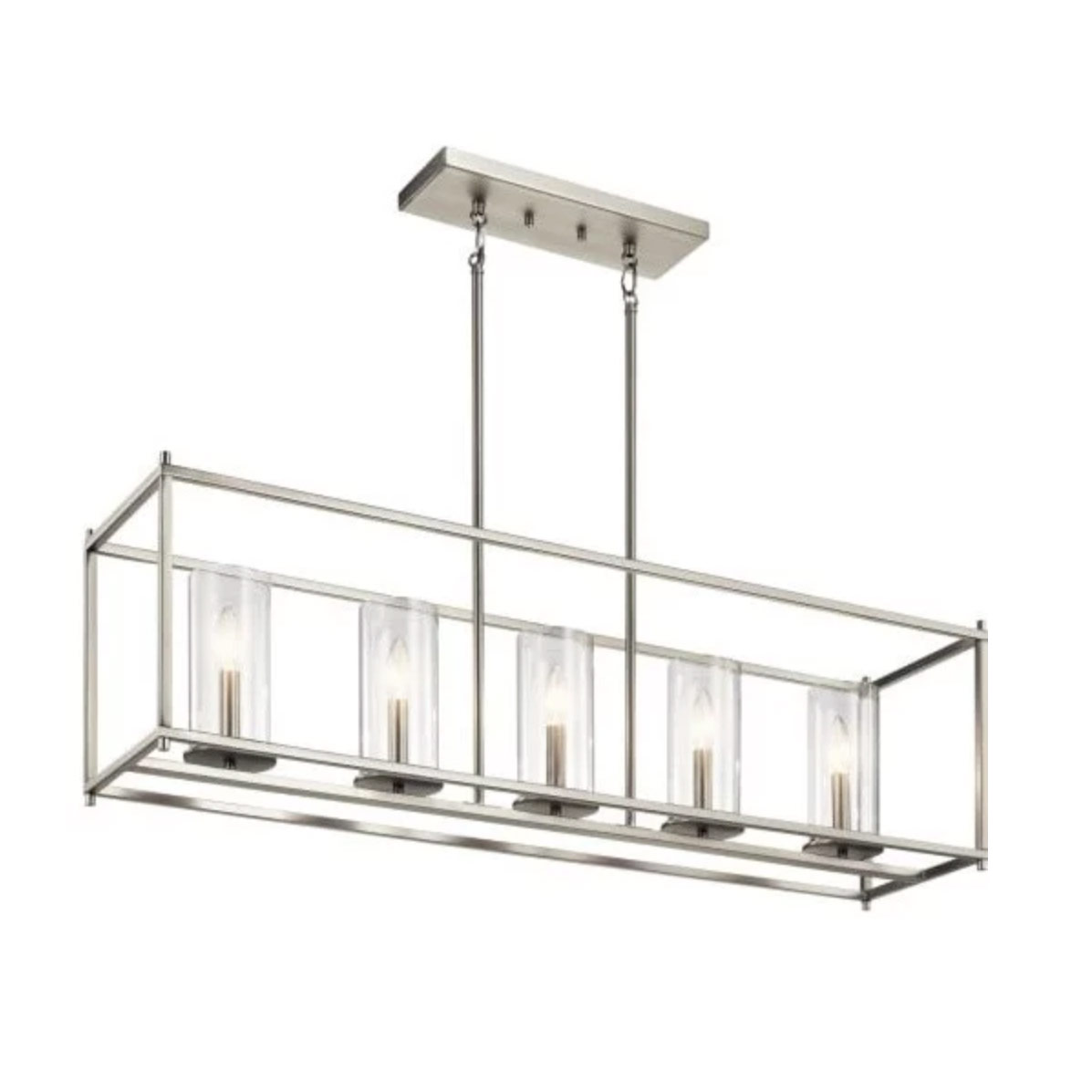
Kichler 43995 Crosby 5 Light 41″ Linear Chandelier, Brushed Nickel: A larger chandelier in a smaller dining room gives the illusion of more space.
Hopefully, these five tips will get you off on the right foot for your small space design. Every room has its own challenges but these five fundamentals will build the foundation for your creativity to flourish. We spend a lot of time in our homes, creating lifelong memories with family and friends. Make the most of your home—even if it’s small.
RELATED READS
Designing with Indoor Plants
Monstera aka “Swiss Cheese Plant” © FeelPicAt one point in my life, I had over 30 indoor plants. But then my husband and I started havings kids, and I gave some away. Then we moved across the country, and I had to part with many, taking only about five with me. That...
Area Rug Tips in Home Design
© MagnoliaWhen designing a space, area rugs are an essential element to consider. Interior designers most often start their plan by choosing a rug first and building the room around it because rugs are the anchor of a room. They ground the space as well as the...
Clever Accent Walls
© BRIO Interior DesignThe idea of an accent wall may sound like an exciting way to add pop to a room, and it’s certainly easier than painting all of the walls but don’t break open that can of paint just yet. Your room needs to meet certain criteria in order to...

